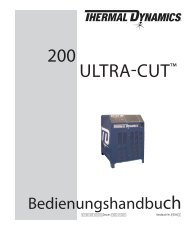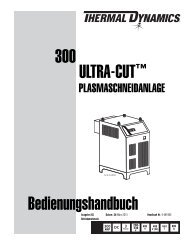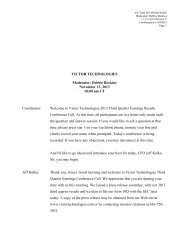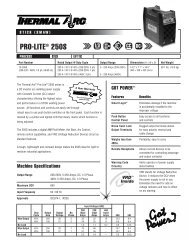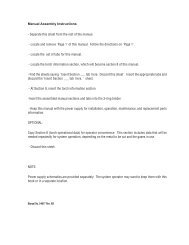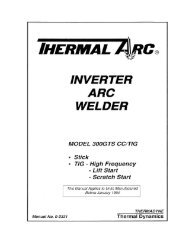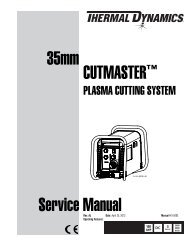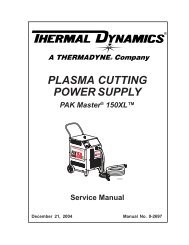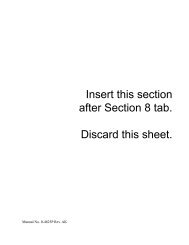Thermal Arc 95 S Brochure Click here to receive your free copy.
Thermal Arc 95 S Brochure Click here to receive your free copy.
Thermal Arc 95 S Brochure Click here to receive your free copy.
Create successful ePaper yourself
Turn your PDF publications into a flip-book with our unique Google optimized e-Paper software.
III. Starting with the Basics<br />
Basic Welding Techniques<br />
Relaxation is Important<br />
Place <strong>your</strong>self in a comfortable position before beginning <strong>to</strong> weld. Utilize a seat with<br />
the appropriate height and do as much work as possible sitting down. Don’t hold <strong>your</strong><br />
body tense. A taut attitude of mind and a tensed body will soon make you feel tired.<br />
Relax and you will find that the job becomes much easier. Proper safety equipment will<br />
keep you from being burned or sparks burning <strong>your</strong> clothes.<br />
Establishing an Electrical Circuit<br />
It’s important <strong>to</strong> establish an electrical circuit between the power source and the base<br />
metal. So make sure that the work clamp is making good electrical contact with the<br />
work piece, either directly or through the work table. For light gauge material, always<br />
clamp the work lead directly <strong>to</strong> the job, otherwise a poor circuit could result.<br />
Practice with Scrap<br />
The simplest way <strong>to</strong> practice welding is <strong>to</strong> run beads on a piece of scrap plate. Clean<br />
any paint, loose scale or grease off the plate and set it firmly on a solid surface like a<br />
work bench so that you can practice.<br />
The Line of Your Weld<br />
Position the scrap piece so you can pull the weld across <strong>your</strong> body, rather than <strong>to</strong> and<br />
from <strong>your</strong> body. The electrode holder lead should be clear of any obstruction so that<br />
you can move <strong>your</strong> arm <strong>free</strong>ly along as the electrode burns down. If the electrode cable<br />
is slung over <strong>your</strong> shoulder, it allows greater <strong>free</strong>dom of movement and takes a lot of<br />
weight off <strong>your</strong> hand. Be sure the insulation on <strong>your</strong> cable and electrode holder has no<br />
damage; otherwise you are risking electrical shock.<br />
STICK (SMAW) Electrode Polarity<br />
Stick electrode leads are generally connected <strong>to</strong> the “+” Positive Output Terminal and<br />
the work lead <strong>to</strong> the “−” Negative Output Terminal but if in doubt consult the electrode<br />
manufacturers literature for specific information.<br />
13



